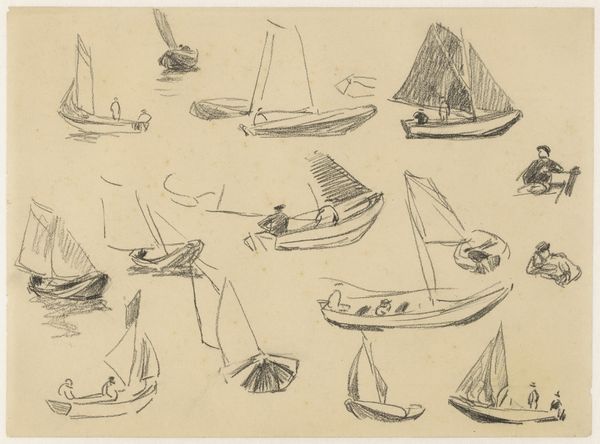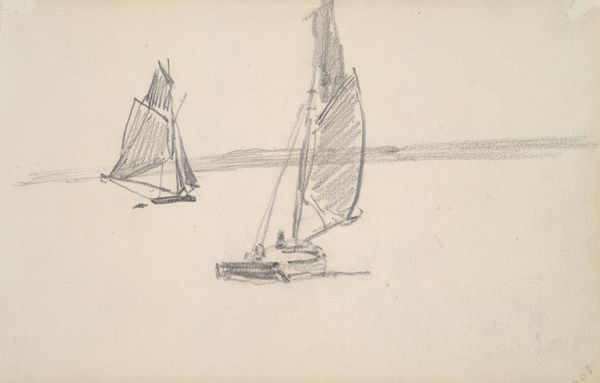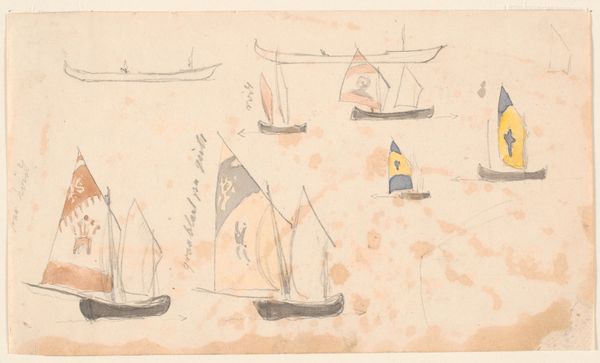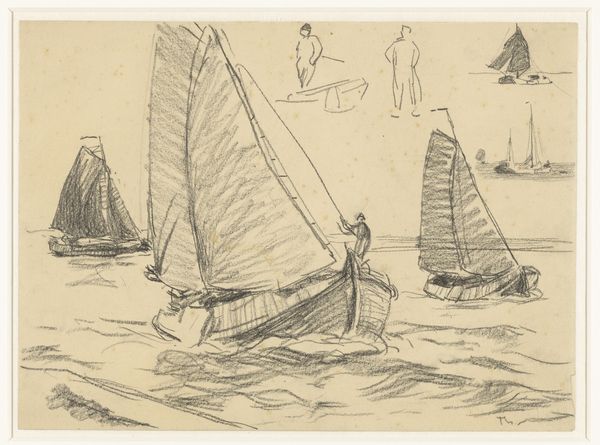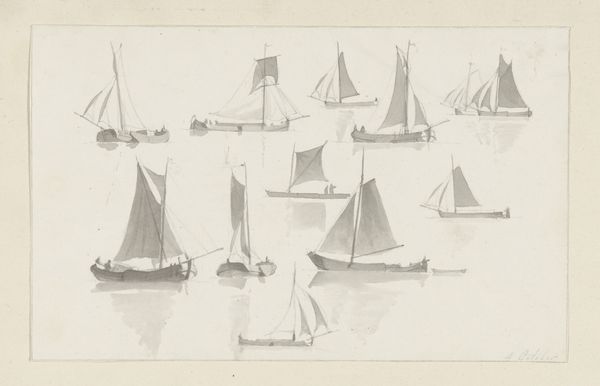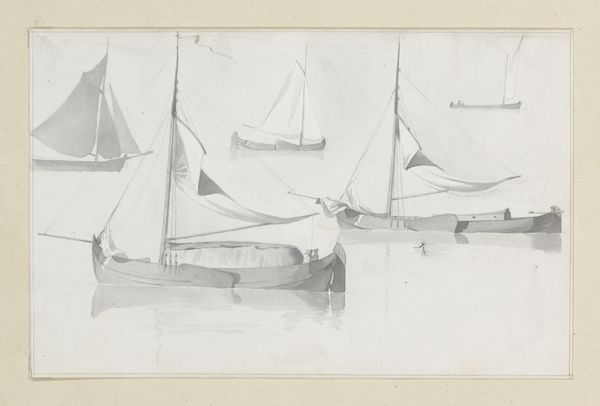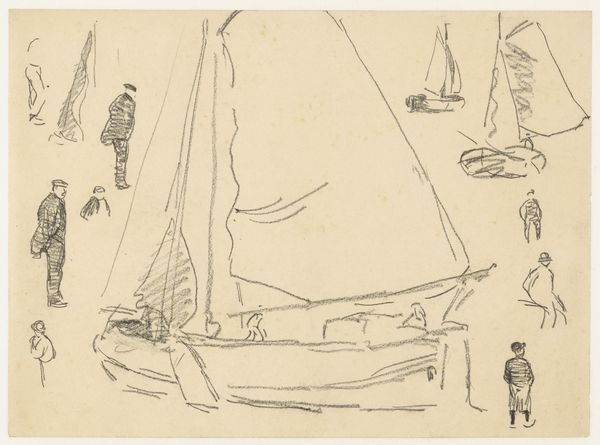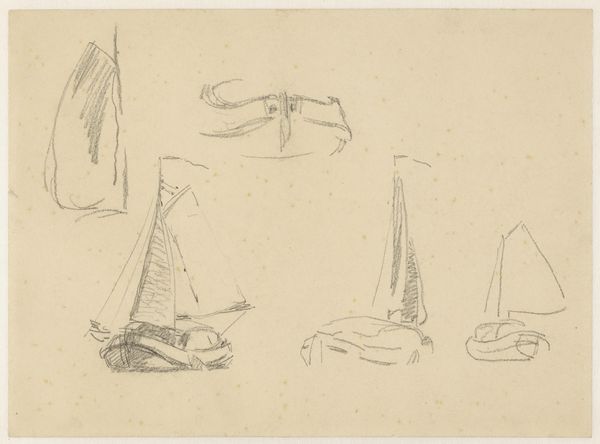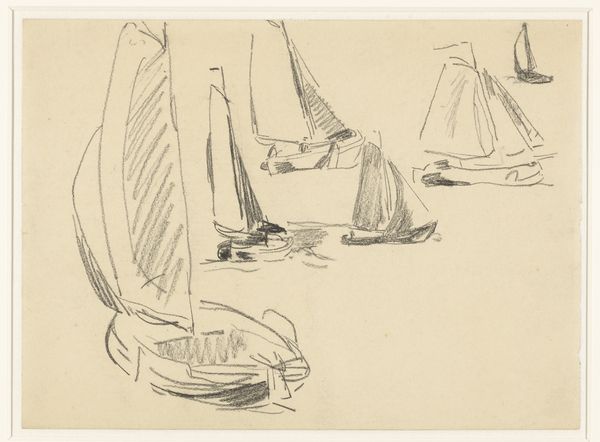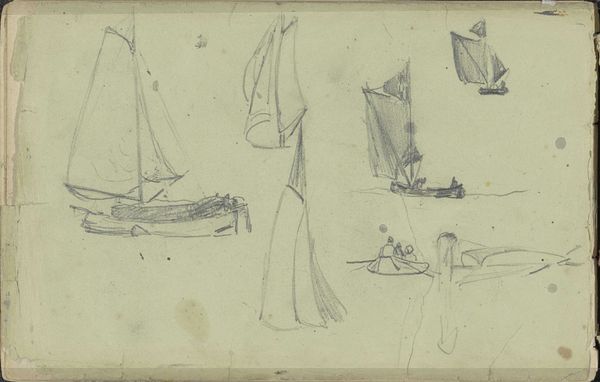
Diverse studies van boten en enkele figuurstudies 1870 - 1931
0:00
0:00
willembastiaantholen
Rijksmuseum
Dimensions: height 225 mm, width 309 mm
Copyright: Rijks Museum: Open Domain
Curator: The Rijksmuseum holds this pencil drawing from Willem Bastiaan Tholen titled, “Diverse studies van boten en enkele figuurstudies.” It’s thought to have been created sometime between 1870 and 1931. Editor: There's a stillness here despite all the implied movement of the boats. A hazy, almost dreamlike quality... it's quite serene. Curator: Yes, the texture created by the pencil lends itself to that hazy feeling. It also highlights the labor involved in creating each individual study on the page. Consider the numerous compositional tests on a single sheet, indicative of a direct engagement with his materials. Editor: I'm thinking about maritime labor itself. Who were these sailors? Were they independent fishermen, or part of a larger commercial enterprise? This connects to broader issues of class, and how art often obscures the hands that physically keep things afloat, literally and figuratively. Curator: That's insightful. The way Tholen captures the light playing on the water, reflecting off the hulls, required not only skill but an intimate knowledge of the boats. What sort of labor was needed to keep them in top conditions at the sea, and how might such details affect its impressionistic context? Editor: I find myself thinking about how these sketches also document a specific moment in Dutch history. The late 19th and early 20th centuries were times of massive social change. Were these images possibly intended to romanticize a traditional way of life in contrast to modern industrialization? Curator: It's plausible. What's particularly fascinating to me is Tholen's repeated exploration of the same subject. It is the nature of the raw pencil marks upon the surface of the sheet itself and how they begin to capture the world with this basic medium. Editor: I agree. Ultimately, for me, these studies remind us of the interconnectedness of our past, how historical forces shape seemingly simple scenes. Art is so embedded in these circumstances! Curator: The materiality serves as the foundation, the anchor, grounding this study in tangible, relatable terms of a human working on creating artwork in its simplest and most essential form. Editor: And seeing it all woven into this intimate visual record really transforms my view of the piece.
Comments
No comments
Be the first to comment and join the conversation on the ultimate creative platform.

